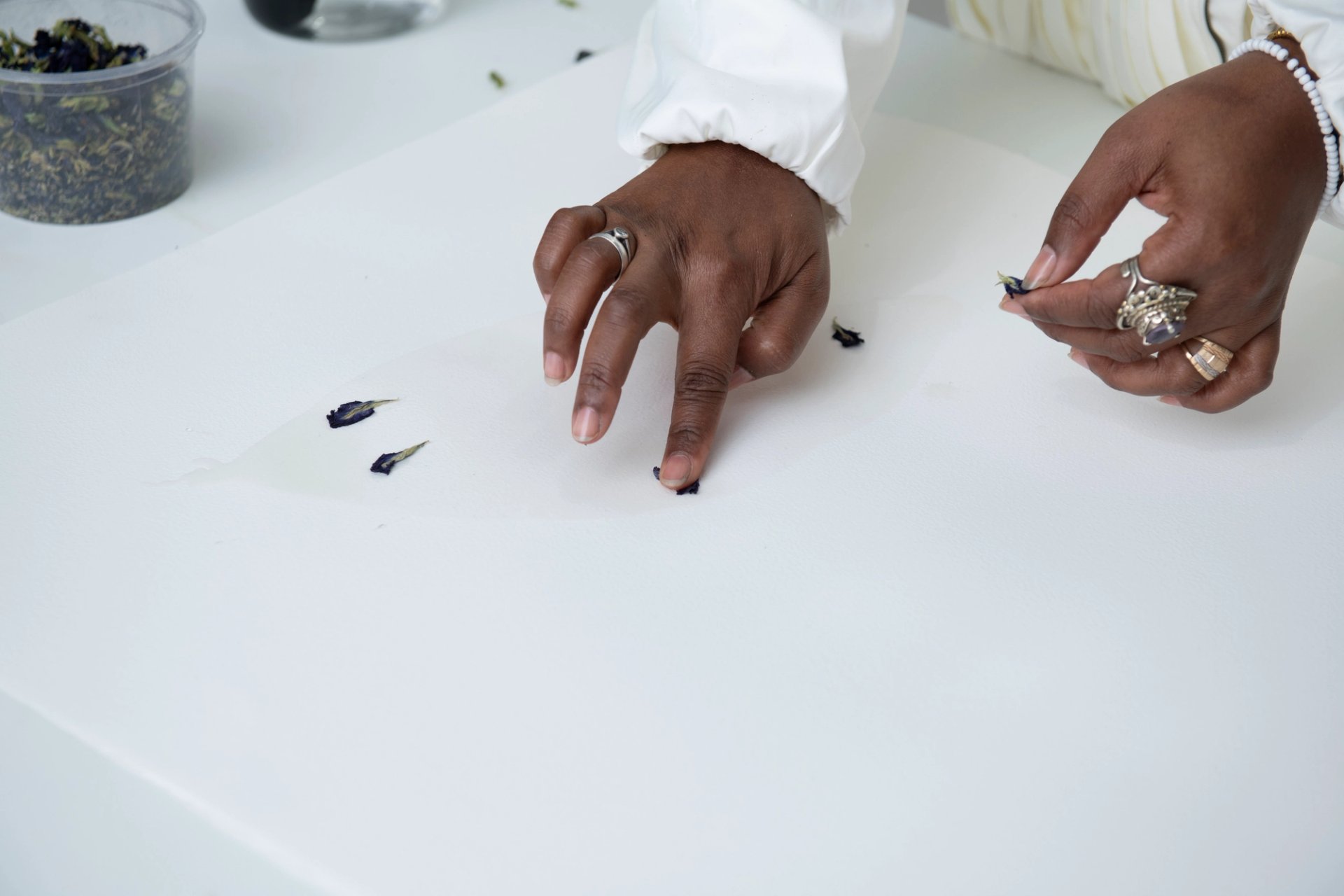The Brazilian artist Juliana dos Santos is the inaugural recipient of a newly launched residency for girls artists, based by Pinacoteca de São Paulo and the Chanel Tradition Fund. Dos Santos’s work explores themes associated to vegetation and pigments native to Brazil and the sensory expertise of color; it spans portray, set up, video, efficiency and different media.
Dos Santos was born in 1987 in São Paulo and holds a doctorate in artwork from the Instituto de Artes at São Paulo State College. In her thesis, The Time of Color, Dos Santos presents her analysis on the blue pigmentation of the Clitoria ternatea flower, a central ingredient in her work. Dos Santos encourages viewers to look at the “performative” qualities of the pigment, which “fades and opens a delicate area for reflection on transformation and impermanence”, she tells The Artwork Newspaper.
The forthcoming residency will present Dos Santos with alternative to additional her botanical research and discover new applied sciences that may contribute to her investigations of the flower. “I’m serious about capturing its sound and scent, increasing its presence into different sensory dimensions,” Dos Santos says. The residency will construct on her analysis into texts like The Nature of Brazilian Colors by Maibe Maroccolo—who developed handmade watercolour paints from yerba mate, Brazilian indigo, Catuaba bark and different native vegetation.
The work of artists like Wolfgang Laib (together with his use of yellow pollen) and Aboubakar Fofana (together with his indigo blue) have additionally been vital references. “I’ve developed a need to raised perceive the origins of color and various kinds of pigments,” Dos Santos says. “I’m notably serious about participating in dialogue with artists who work with color by its uncooked supplies.”
Inside Juliana dos Santos’s studio Photograph: Levi Fanan
This month, Dos Santos opened her first solo museum exhibition at Galeria Praça, an area located in Pina Contemporânea, one among three complexes that make up Pinacoteca de São Paulo. The exhibition, Juliana dos Santos: Temporã (till 8 February 2026), is the end result of a earlier residency, the place Dos Santos says she sought to “push the boundaries of scale”, creating 200 metres of pigmentation utilizing the Clitoria ternatea flower and a switch method.
“The best way Juliana approaches her apply is dynamic and open to the surprising—to the timing of the flower, to the shifts introduced by the temperature of every color and pigment she experiments with,” says the present’s curator, Lorraine Mendes. “Juliana strikes superbly by color and shapes, from work and seedlings held on the partitions, to experimentation with types that break free from the primacy of the rectangle as the usual pictorial floor.”
She provides: “Having Temporã broadens public attain, generates content material for the museum’s personal academic initiatives round summary artwork, educates new methods of seeing and creates dialogues with youthful artists who’re nonetheless looking for their very own poetics and paths.”

Inside Juliana dos Santos’s studio Photograph: Levi Fanan
Subsequent month, Dos Santos will current a digital actuality (VR) work that equally explores the religious symbolism of pure pigments within the thirty sixth version of the Bienal de São Paulo (6 September 2025-11 January 2026). The work shall be proven as a part of the biennial’s newly launched Apparitions programme, which brings VR works to the outside of the principle exhibition constructing and different websites.
Dos Santos was beforehand included within the twelfth Mercosur Biennial, which was held nearly in 2020, and took part within the third version of the Triennial of Arts at Sesc Sorocaba in São Paulo in 2021. She has been featured in a number of group exhibitions in Brazilian museums, together with at Museu de Arte do Rio, and has been nominated twice for the Pipa Prize—one of the vital prestigious awards for up to date artists in Brazil.
The Chanel Tradition Fund was launched in 2021 to assist artists and long-term artwork tasks. It supported the French Caribbean artist Julien Creuzet because the French consultant on the sixtieth Venice Biennale. It additionally collaborated with Hamburger Bahnhof in Berlin this yr to launch an annual commissioning sequence for monumental works, which was given to the Czech artist Klára Hosnedlová in its inaugural yr. The fund additionally holds the Chanel Subsequent Prize, granting recipients €100,000 and mentorship alternatives.


